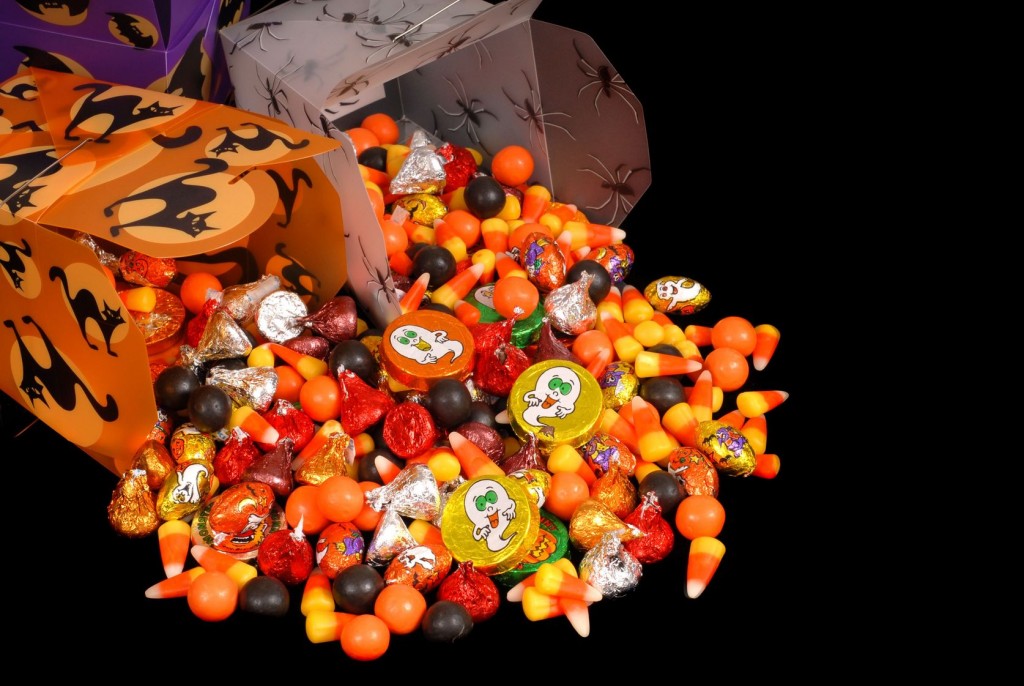Halloween’s coming. Whether your kids do the traditional trick or treating, or attend an alternative event like Fall festival or harvest party, they’re going to be getting more candy and sugary treats than should be legal. A pretty big win for any kid.
Most are familiar with the history of trick-or-treat. Over 2,000 years ago, the Celts celebrated their New Year on the evening of Oct. 31. A festival began and continued into the next day honoring the lord of death, Samhain.
They believed that at this time the supernatural barriers between the living and the dead were removed. Ghosts, now able to cross over to the realm of the living, were believed to return to the homes of their families and expected to be entertained and catered to.
If they were not welcomed, these ghosts would do mischievous tricks to the living. So, better to give a treat to those who come calling to avoid a trick. But there’s also…
A Trick Behind Those Treats
No matter what shape or wrapper, it’s basically all the same thing: sugar. Not the complex carbohydrates found in vegetables, grains, and fruits. Simple sugars found in candy, soft drinks, and most treats with a wrapper.
The trick is that though it may taste good, sugar suppresses our immune system. A single can of your favorite soft drink has the equivalent of about 10-11 teaspoons of sugar and significantly impairs the body’s ability to ward off bad bacteria and viruses for hours.
This is why the week after Halloween is usually marked with widespread sickness among kids. Colds and flu run rampant. If you’ve never tracked it, watch it this year. It’s not because the “flu season” starts November 1. It’s because of the unusual overload of sugar that nullifies normal body defenses.
And, of course, we know it doesn’t do any good to young teeth. Researchers this week discovered those killed in Vesuvius eruption in 79 A.D. had amazingly impeccable teeth even without toothbrushes or modern dentistry. The reason? Virtually no sugar in their diet.
“So What’s A Parent To Do?”
If you want to go the purist route, cut out the candy completely. But most of us aren’t up for that battle. We don’t want to be the kill-joy more than we have to be.
There are some options that can, however, allow parents to better manage the bags of candy coming our kids’ way very soon.
- Downplay the quantity. The person who gets the most candy doesn’t win! Shift the focus from the potential amount of candy to the fun involved. Select the size of the collection bag wisely—don’t send them with a pillow case!
-
No gorging policy. Before the trick-or-treating and parties, set some expectations. No binging while collecting. Let the kids know too much of any treat isn’t good. Tell them you’re going to make the bounty of the night last a while.
-
Dole it out. Once home, let everyone bask in the spoils of their labor—then have them turn it all over to the steward of the home for safekeeping. (It may be necessary to protect under lock and key!) You can then dole it out over the next few days as you see fit. For practical administration, we pooled everyone’s candy together. Probably won’t be popular but extremely pragmatic. Very helpful in lessening self-centeredness.
-
Thin the inventory and wean. After a week or two of measured distribution, discreetly begin to thin out the inventory (that means throw out). Start preparing the troops that the feasting is about to come to an end. If you don’t want to just throw it out, you could 1) pay each child a set fee for the remainder so they can purchase something else for themselves, 2) find someone to give it to who may have missed out, or 3) sell to a local dentist who offers a buy out. Some will buy candy for $1 per pound brought to their office.
Bottom line: you have to be the parent. Someone has to make the call when enough is enough. The wise parent knows how to pick the battles, minimize the damage, and keep morale high. Create great memories, have fun, yet do it in a smart way.
Question: How do you manage the Halloween candy thing responsibly? Share your answer in the comments below.
